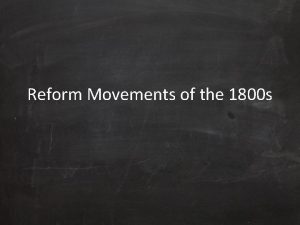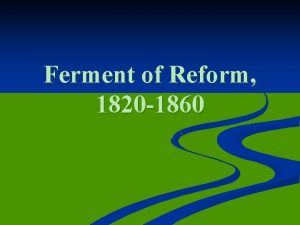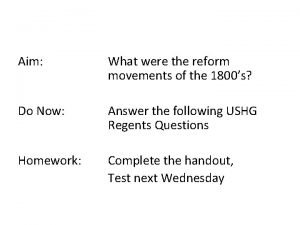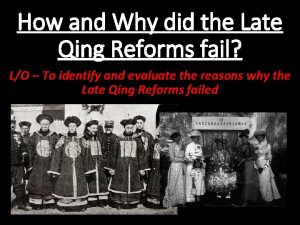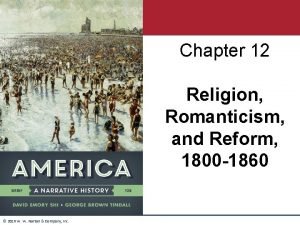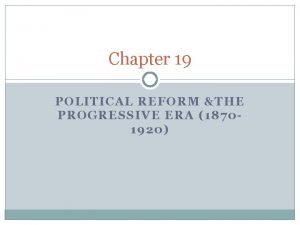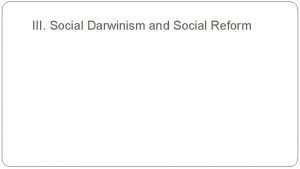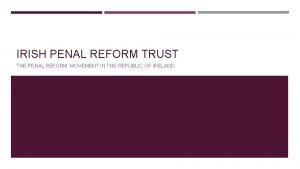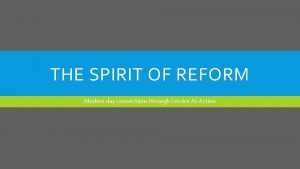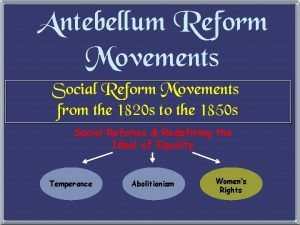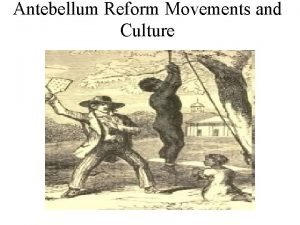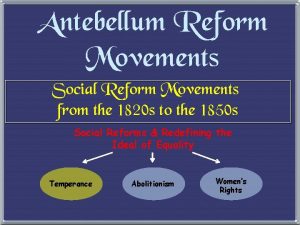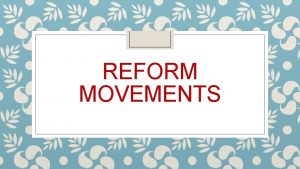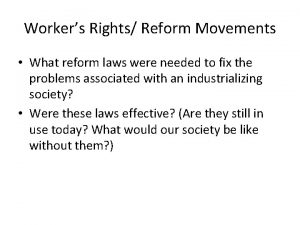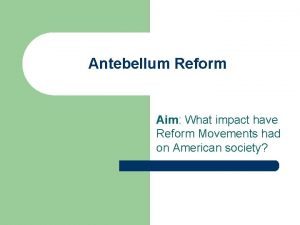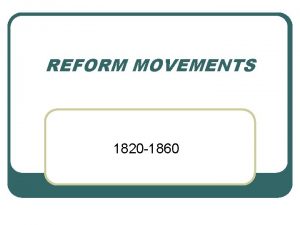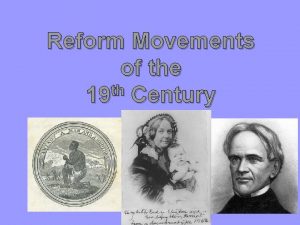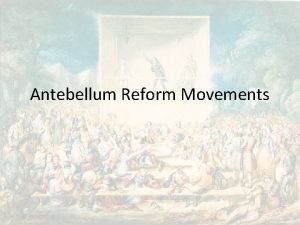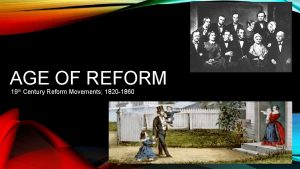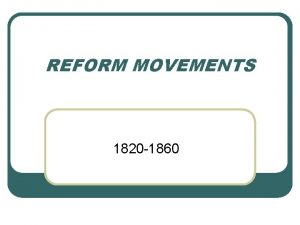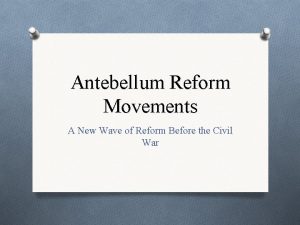Aim What were the reform movements of the















- Slides: 15

Aim: What were the reform movements of the 1800’s? Do Now: Answer the following USHG Regents Questions Homework: Complete the handout, Test next Wednesday

Which type of map shows the most detailed information about Earth’s natural features, such as rivers, lakes, and mountain ranges? 1. 2. 3. 4. 4. political weather demographic physical

Which statement best describes governmental power under the Articles of Confederation? 1. 2. 3. 4. 4. Power was shared equally by the central government and the states. A balance of power existed between the three branches of the central government. A strong chief executive headed a unified central government. The states had much greater power than the central government.

The Federalist Papers were published in 1787 and 1788 to help gain support for 1. 2. 3. 4. 2. a bill of rights the ratification of the Constitution a weaker central government the abolition of slavery and the slave trade the ratification of the Constitution

What were the reform movements of the 1800’s?

Reform Movements of the 1800’s • DEF: Reform – a change for the better.

Reform Movements of the 1800’s • The 1800’s were a time when great changes in America had a strong impact on people’s lifestyles: • Urbanization, growth in immigration, westward expansion and the cotton-based economy of the south, created opportunities, as well as, serious problems.

The Great Awakening • A powerful religious movement, encourages people to take charge of their own futures and help improve society.

Public Schools • Horace Mann believed all human beings had a right to a public education and was a strong advocate for public schools (It’s all his fault).

Mental Hospitals • Dorothhea Dix – helped establish some of the first mental hospitals to care for the mentally ill.

Abolition • Abolition – there was a strong movement to stop slavery in America. Some of the most famous abolitionists included Frederick Douglas, Harriet Tubman, Sojourner Truth, William Lloyd Garrison (all to be studied at a future date).

Women’s Rights Movement • 1848 – Seneca Falls, NY – Elizabeth Cady Stanton and Lucretia Mott organize the first convention to discuss women’s rights.

Prisons Built • Sing Prison

Other Movements • Hospitals • Care Facilities for the Physically Disabled • Orphanages

Summary / Homework Test on Wednesday, October 4, 2015
 Reform movements 1800s
Reform movements 1800s Antebellum reform apush
Antebellum reform apush Second great awakening
Second great awakening Reform movements def
Reform movements def Axial dance definition
Axial dance definition Vandala philippines
Vandala philippines Was/were going to future in the past
Was/were going to future in the past Late qing reform
Late qing reform Chapter 12: religion, romanticism, and reform, 1800–1860
Chapter 12: religion, romanticism, and reform, 1800–1860 Chapter 19 political reform and the progressive era
Chapter 19 political reform and the progressive era Transcendentalism began as a ___ reform movement.
Transcendentalism began as a ___ reform movement. Choosing the wrong drivers for whole system reform
Choosing the wrong drivers for whole system reform Land reform def
Land reform def What was reform darwinism?
What was reform darwinism? Irish penal reform trust
Irish penal reform trust The spirit of reform lesson 1
The spirit of reform lesson 1
